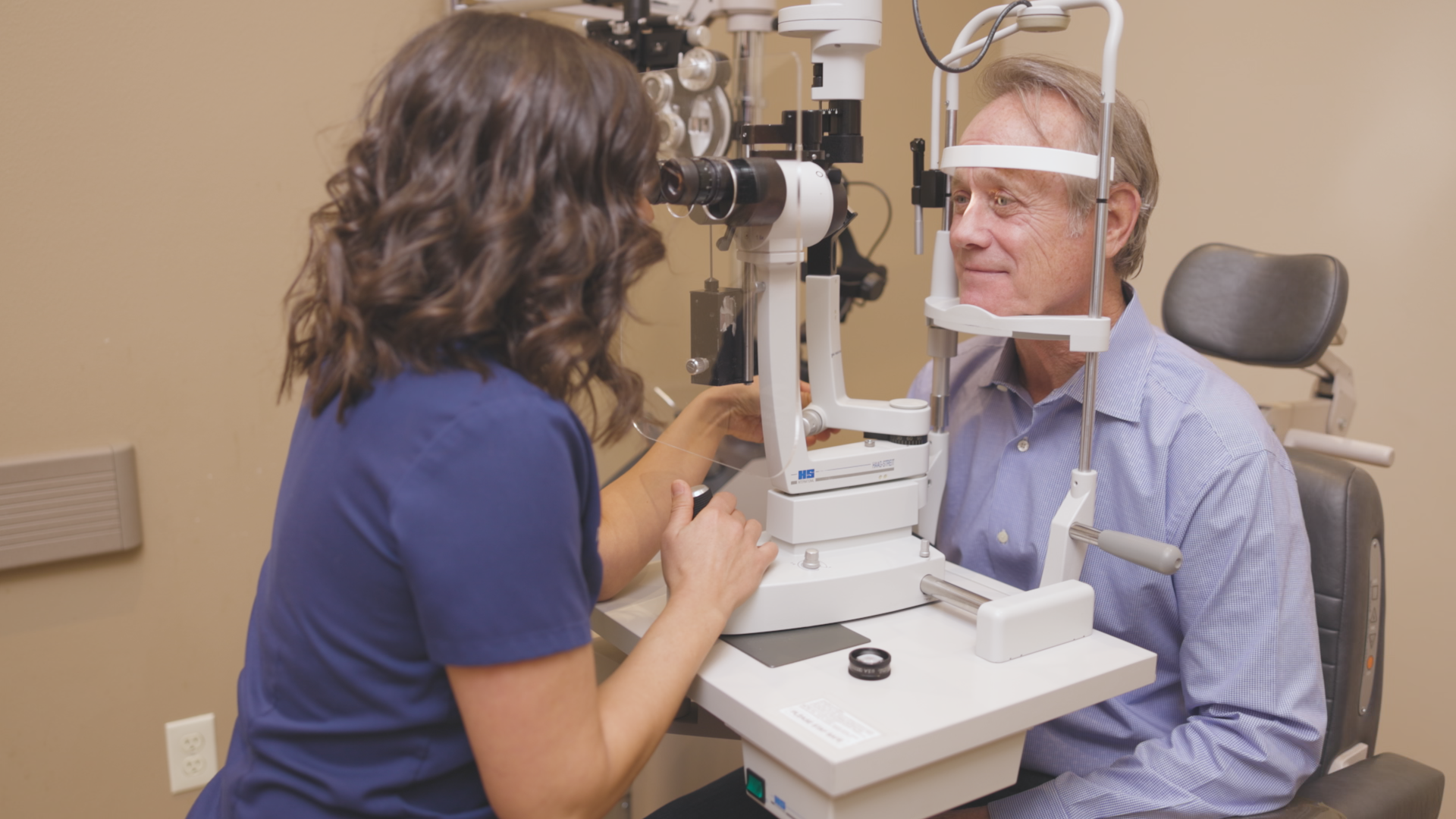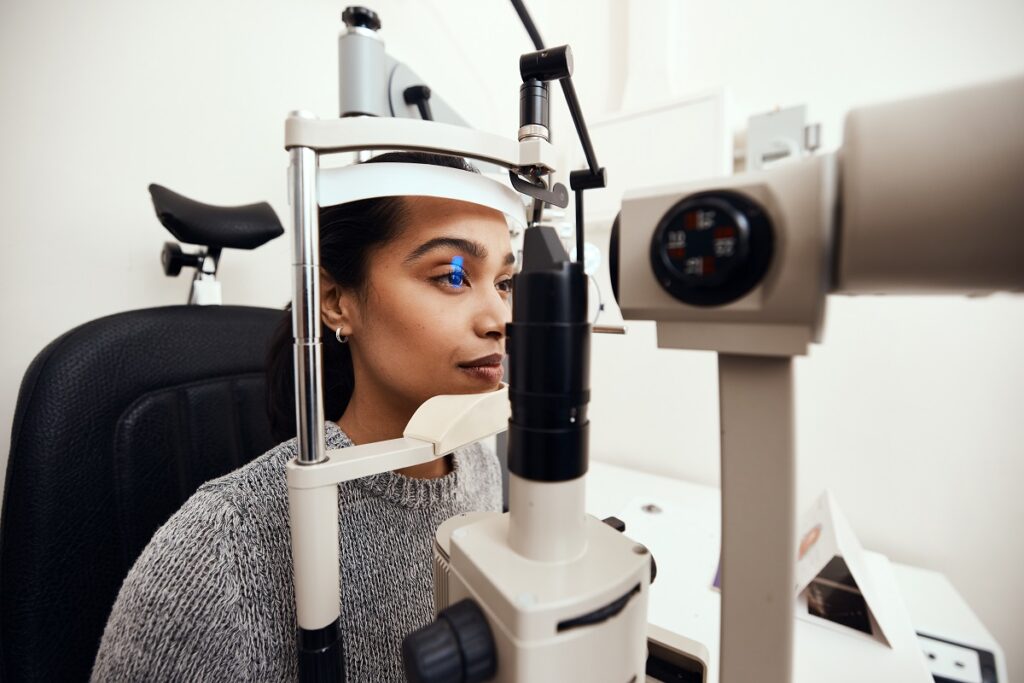How an Eye Doctor Can Help Prevent Vision Complications in Chino
How an Eye Doctor Can Help Prevent Vision Complications in Chino
Blog Article
Checking Out the most recent Technological Improvements in Optometry and What They Mean for Optometrists
From the accuracy of Optical Coherence Tomography to the nuanced insights used by AI-driven analysis tools, these innovations are setting new criteria in patient evaluation and therapy. As these improvements permeate the technique, eye doctors are encountered with the obstacle of accepting these devices to enhance individual end results.
Technologies in Diagnostic Tools
Advancing the field of optometry, innovations in analysis devices have transformed the way eye care professionals assess and detect eye problems and aesthetic disabilities. The past years has actually observed considerable technological developments, allowing more comprehensive and exact analyses.
One more key advancement is the intro of innovative corneal topography systems, which map the surface curvature of the cornea with precision. These devices are specifically valuable for fitting get in touch with lenses and detecting corneal disorders. In addition, digital retinal imaging has transformed conventional ophthalmoscopy, supplying detailed, scenic sights of the retina that facilitate complete aesthetic evaluations.
The advancement of wavefront aberrometry has likewise been vital, enabling the evaluation of refractive mistakes with unrivaled precision (Optometrist Chino). This technology assists in customizing rehabilitative lenses and enhancing medical end results for refractive surgical treatments. Jointly, these diagnostic improvements encourage optometrists to provide remarkable individual care, ensuring early treatment and customized treatment strategies, inevitably boosting visual health and wellness results
AI in Person Monitoring
Structure on the foundation of advanced analysis devices, the incorporation of expert system (AI) in individual administration stands for a transformative jump for optometry. AI systems are increasingly employed to boost performance, accuracy, and personalization in individual care. By analyzing substantial quantities of information, AI can identify patterns and forecast prospective eye conditions, enabling eye doctors to tailor interventions better. This ability is vital in taking care of chronic eye diseases such as glaucoma and diabetic retinopathy, where very early detection and continual tracking are key.
Moreover, AI-driven systems facilitate structured person interactions and management processes. Automated scheduling, digital assessments, and individualized follow-up strategies not only enhance patient contentment but additionally optimize time administration for experts. These systems can triage clients based upon the seriousness of their problems, making sure that those in essential requirement obtain prompt attention.
Moreover, AI boosts decision-making by providing optometrists with evidence-based suggestions and therapy paths. By integrating information from digital health documents, AI tools provide insights that inform scientific choices, reducing the danger of mistakes and improving person results. As AI remains to advance, its function in person administration will likely broaden, improving the landscape of optometric treatment.
Advancements in Retinal Imaging
In the world of optometry, retinal imaging has actually observed impressive technological improvements that are improving diagnostic capabilities and individual care. Innovations such as Optical Coherence Tomography (OCT) and fundus digital photography have reinvented just how optometrists picture and examine the retina.
Improved imaging techniques like OCT angiography are further refining analysis accuracy. This non-invasive strategy maps blood circulation in the retina, using crucial insights into vascular health without the demand for dye shots. Furthermore, flexible optics innovation is being integrated right into retinal imaging systems to deal with ocular aberrations, providing unmatched picture clearness. Such improvements promote the recognition of minute retinal changes that could indicate disease development.
Additionally, advancements in expert system are boosting retinal imaging by allowing computerized analysis of large datasets. These systems assist eye doctors in recognizing patterns indicative of pathology, thus enhancing diagnostic precision and performance. Jointly, these developments are changing retinal imaging into a cornerstone of contemporary eye care, enhancing results and increasing healing possibilities.
Teleoptometry's Growing Role
Teleoptometry is progressively becoming a vital component of eye care, driven by developments in electronic interaction and analysis tools. This is particularly beneficial in underserved and rural locations where access to specialized eye care is commonly restricted.
The combination of synthetic knowledge (AI) additional improves teleoptometry, allowing the evaluation of visual information and aiding in the discovery of ocular problems such as glaucoma and diabetic retinopathy. AI-powered formulas can quickly analyze intricate imaging data, offering eye doctors with important understandings that strengthen scientific decision-making.
Furthermore, teleoptometry sustains continuity of care via seamless combination with electronic health documents (EHRs), allowing eye doctors to keep extensive person histories. When consulting with different professionals., this makes certain that clients obtain consistent and individualized treatment also.
Regardless of these advantages, challenges stay, consisting of ensuring data security and handling individual assumptions. Nevertheless, teleoptometry represents a considerable stride in the direction of even more obtainable, reliable, and patient-centered eye care. As innovation advances, its role is positioned to broaden additionally.

Future Patterns in Eye Treatment
A myriad of innovative fads is readied to reshape the future of eye care, driven by technological developments and the developing requirements of clients. One significant pattern is the integration of man-made intelligence (AI) in diagnostics, which guarantees to enhance the accuracy and efficiency of eye evaluations. AI algorithms can analyze large quantities of information from retinal images, possibly finding conditions like diabetic person retinopathy and glaucoma earlier than typical techniques.
Additionally, individualized medication is getting traction in optometry, with genetic testing notifying customized therapy my explanation plans. This technique intends to enhance individual end results by tailoring treatments to individual hereditary profiles. Wearable innovation, such as smart get in touch with lenses, is additionally imminent, offering real-time tracking of intraocular stress or sugar degrees, therefore supplying continuous insights right Web Site into systemic and eye health.
The fostering of increased fact (AR) and online truth (VIRTUAL REALITY) in training and person education and learning is another arising pattern. These innovations provide immersive experiences that can boost understanding and skills both for eye doctors and patients. As these trends develop, eye doctors need to stay abreast of technological improvements to give innovative care, guaranteeing better client outcomes and satisfaction in the dynamic landscape of eye care.
Verdict

Jointly, these analysis developments encourage optometrists to supply premium patient treatment, making certain very early intervention and tailored therapy methods, eventually improving aesthetic health outcomes.

As these innovations proceed to evolve, optometrists must adjust and include them right into practice, ultimately maximizing workflow efficiency and elevating the standard of eye care delivered to individuals.
Report this page